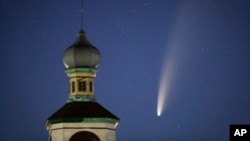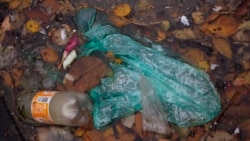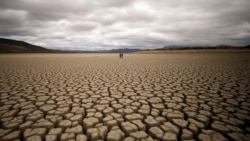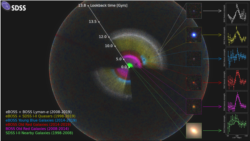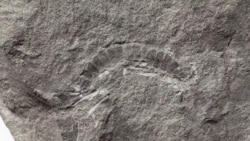In 2020, many of the world’s top scientists centered their attention on the new coronavirus. Their efforts provided valuable information about the virus and led to new vaccines to fight it.
But there were other big scientific developments in 2020, as well. Here is a look back at some of the notable science stories we covered during the past year.
Plastic-eating bacteria
European researchers identified a new bacterium that feeds on polyurethane, a kind of plastic that is difficult to recycle or destroy.
The team, from Germany’s Helmholtz Center for Environmental Research, said the discovery could help reduce a flood of hard-to-recycle plastics filling up the world’s landfills and polluting oceans.
Many polyurethane-based products can release dangerous chemicals into the environment. But the researchers found that the bacterium can produce enzymes to break down the material.
‘Unlivable’ heat by 2070
Researchers from the United States, China and Europe warned that in just 50 years, as many as 3.5 billion people could be facing “near-unlivable” heat.
A study suggests the extreme heat would result from rising world temperatures linked to human-caused climate change. The exact number of people at risk will depend on whether pollutant levels can be reduced and how quickly the world population will grow.
Under the worst-case predictions for population growth and carbon pollution, the study estimates about 3.5 billion people could be living in extremely hot areas by 2070. That would be one-third of the world’s projected population.
Cloud seeding to produce snow
Scientists said they used new measuring methods to confirm that cloud seeding can produce snowfall under the right conditions. Cloud seeding involves injecting various substances into clouds to produce rain, snow or ice that falls to the ground.
American researchers announced they had used radar and other instruments to measure snowfall levels during experiments carried out in the state of Idaho.
The researchers said that, in several cases, cloud seeding operations measurably increased snowfall across targeted areas.
In some cases, the seeding created new snowfall where no natural snow existed. One cloud seeding operation resulted in precipitation that produced snowfall for about 67 minutes.
Neowise comet
A comet called Neowise provided excellent light shows for people across the world.
Comets are solar system objects made up of ice, rock and dust. Scientists estimated Neowise was about 5 kilometers across. It was the brightest comet to appear above the Northern Hemisphere in 25 years.
Social media users in many countries posted images they captured of the comet as it lit up the sky over their heads.
3D map of universe
Scientists released the largest three-dimensional, or 3D map of the universe ever created.
The 20-year project aims to map the universe using data collected from a telescope in the American state of New Mexico. Researchers said the 3D map produced measurements of more than two million galaxies and quasars. Quasars are defined as “bright galaxies lit up by material falling onto a central supermassive black hole.”
World’s oldest known animal
Scientists said in May they had discovered what is believed to be the oldest-known land animal. Remains of the millipede-like creature were found in Scotland.
Researchers said the small, fossilized creature is estimated to be about 425 million years old. It may have helped lead the way for the many animals that would later live on land.
While the creature is the earliest land animal known from a fossil, soil worms are believed to have lived before them – possibly 450 million years ago.
‘Zeptosecond’ measured for first time
German scientists announced they had measured the smallest unit of time ever recorded - a zeptosecond. A zeptosecond is one trillionth of a billionth of a second.
Researchers made the discovery while studying how long it took a photon – a particle of light – to cross a hydrogen molecule. They said the photon crossed the molecule in about 247 zeptoseconds. “This is the shortest timespan that has been successfully measured to date,” the team said in a statement.
I’m Bryan Lynn.
Bryan Lynn wrote this story for VOA Learning English. Ashley Thompson was the editor. We want to hear from you. Write to us in the Comments Section, and visit our Facebook page.
__________________________________________________
Words in This Story
recycle – v. to reuse something that has been used before often in another way
enzyme – n. a chemical substance produced by living cells that makes particular chemical reactions happen in animals and plants
precipitation – n. rain or snow falling to the ground
three-dimensional – adj. appearing to have length, depth and width
galaxy – n. a large group of stars from the same universe
millipede – n. a small creature that is like an insect and that has a long, thin body with many legs
fossilized – adj. having been changed into a fossil. A fossil is something (such as a leaf, skeleton, or footprint) that is from a plant or animal that lived in ancient times
unit – n. a single thing or a separate part of something larger
timespan – n. a period of time within which something happens, or a period between two events



